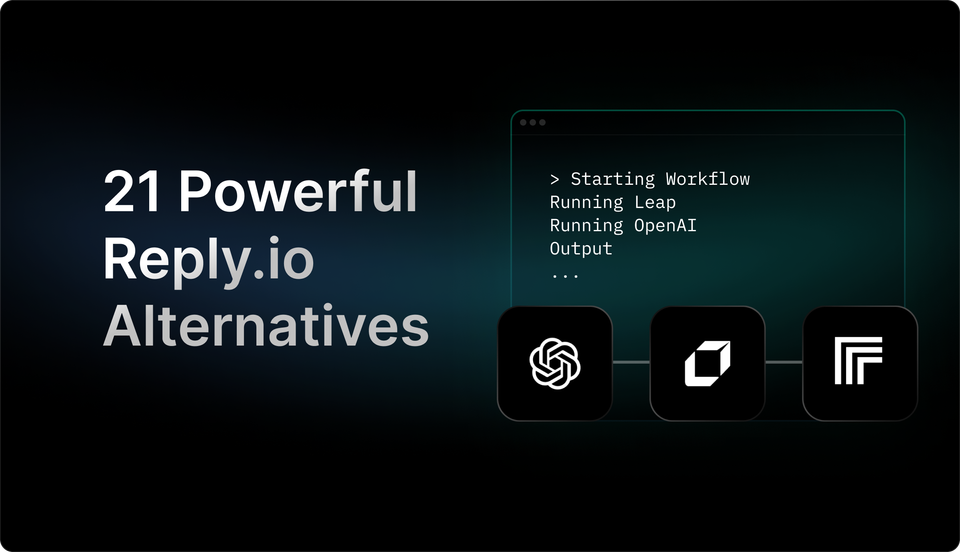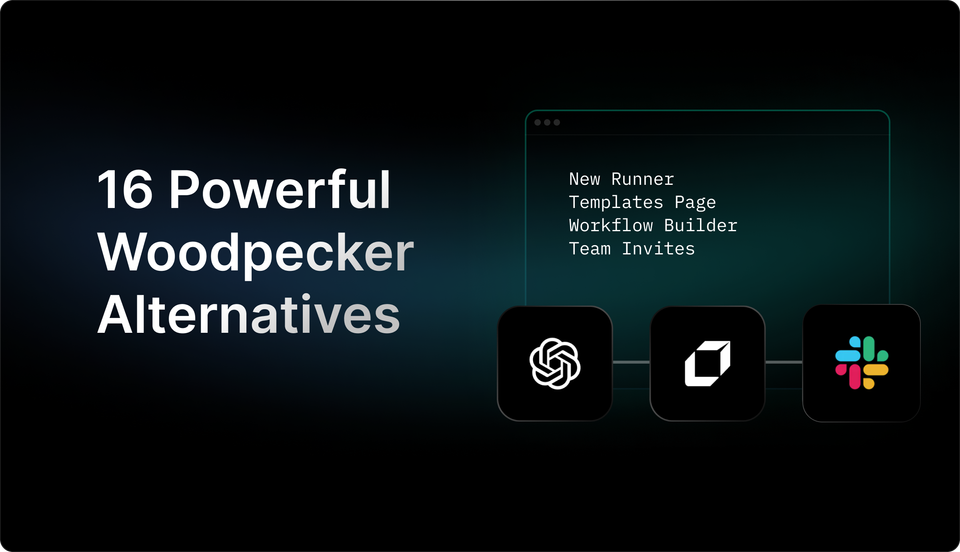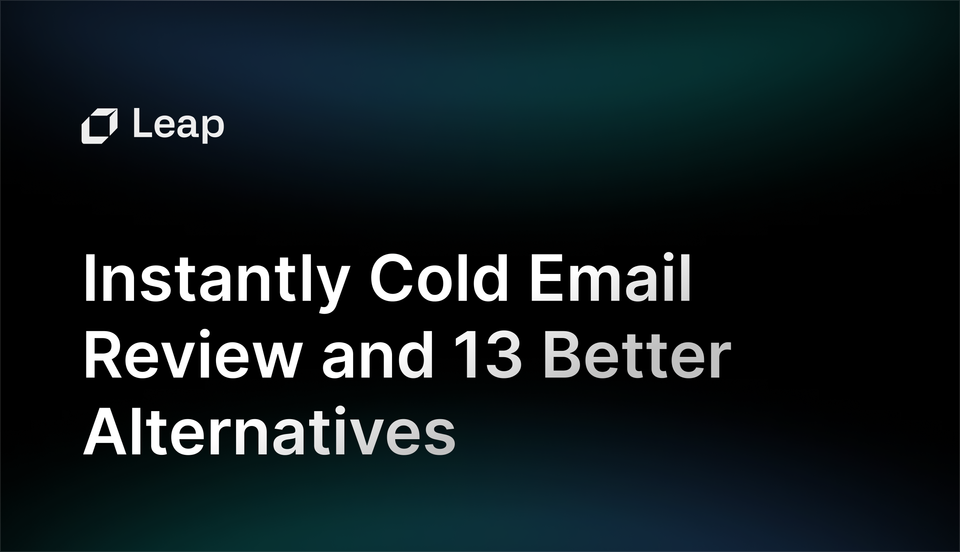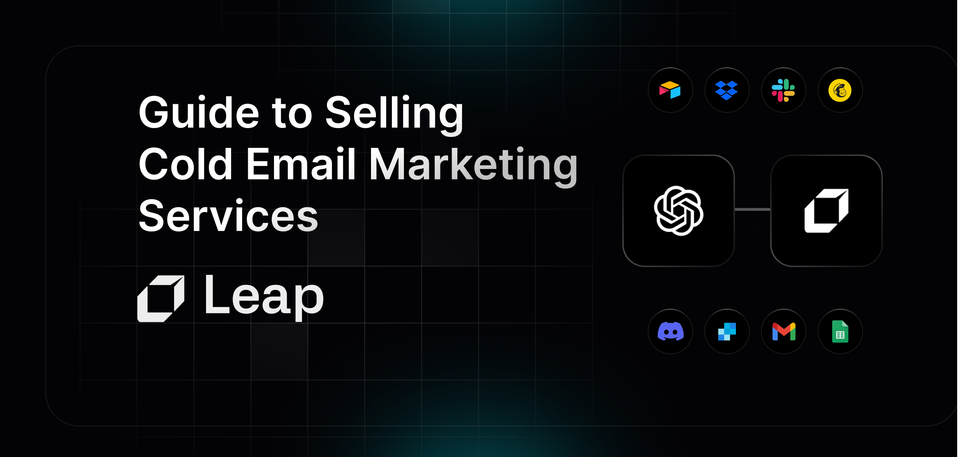How Long Should A Cold Email Be? [Based on Research]
Wondering how long should a cold emails be for maximum effectiveness? Learn the answer backed by research data in this informative post.
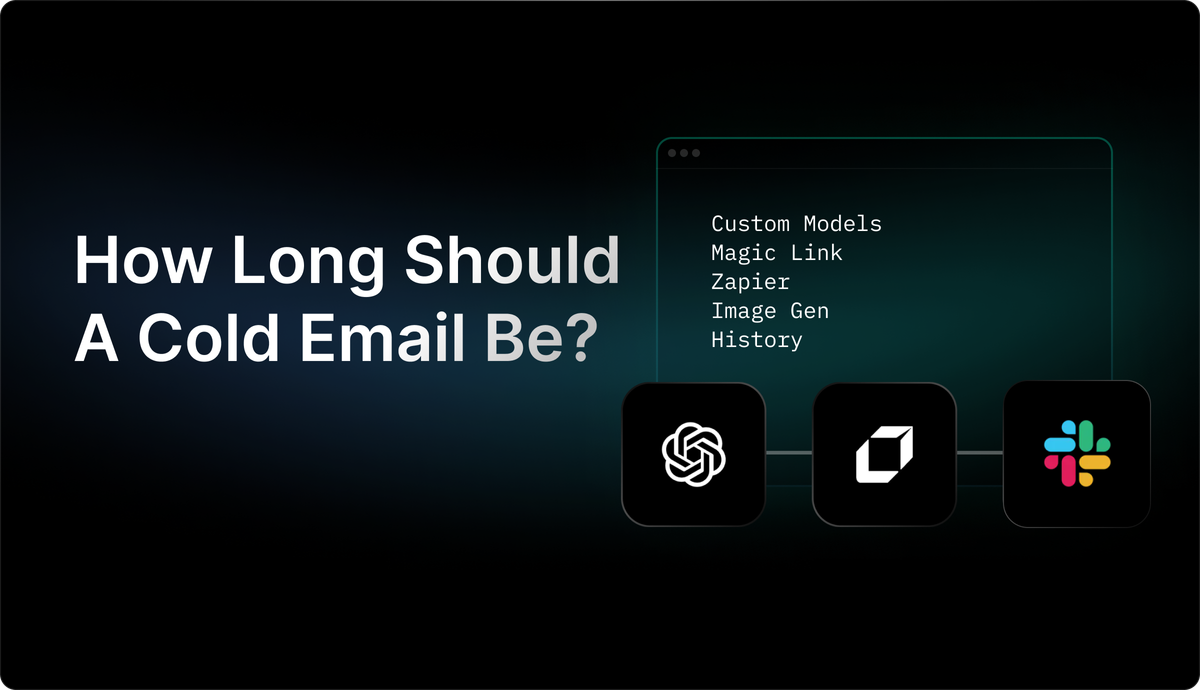
Crafting the perfect cold email can be tricky. One of the most common questions is how long should a cold email be? Many articles talk about keeping them short, but there's more to it than that. You want to provide enough value about your business, while also keeping engagement high. So, how long should a cold email actually be? The answer may surprise you. In this post, we'll cover how long your cold emails should be for optimal outreach, engagement, and conversion rates. We'll look at how much information to include in your email and how much is too much. If you're struggling with getting responses from your cold emails, you may be making them too short or too long. Let's break it down and find out how long your cold email should be.

Why Cold Email Length Matters

When it comes to cold emailing, there's no denying that it's a powerful strategy for generating new leads and boosting sales. But like any form of communication, it requires a delicate balance. Too short, and your message lacks substance; too long, and you risk losing the recipient’s interest. Finding that sweet spot is crucial for success.
Crafting the Perfect Length
The ideal length of a cold email typically falls somewhere between 50 to 125 words. This length is long enough to convey your message effectively, but short enough to maintain the recipient's attention. A concise email makes it easier for the recipient to digest the content quickly, increasing the likelihood of a response.
Focusing on Recipient Needs
It's also important to remember that the purpose of a cold email is to pique interest and start a conversation, not to sell your product or service outright. So, keep your email focused on the recipient's needs and how you can help address them.
Tips to Increase the Chances of a Response
- Focus on the subject line and opening sentence — these are the first things the recipient will see, so they need to be attention-grabbing.
- Avoid overly salesy language and instead, opt for a personalized touch that demonstrates your value to the recipient.
- A cold email should be long enough to convey your message effectively while maintaining the recipient’s interest.
By finding that delicate balance, you can increase the chances of a response and ultimately, a conversion.
Automating Work with AI
Leap helps you to automate your work with the power of AI. Partnered with Zapier, Vercel, and more, Leap enables you to supercharge your work by allowing you to create custom AI automations. Create sophisticated AI automations with no-code. Connect the tools you love with best-in-class AI text, image, and audio models.
Supercharge your existing tools with seamless AI integrations to OpenAI, Microsoft, and more. From summarizing documents, to voice translation, to AI call transcription, to AI avatar and asset generation, to SEO automation, to even automating the cold email creation and sending process, automate anything with Leap Workflows. The opportunities for automation are endless with Leap workflows.
Try Leap’s AI Workflows tool for free today.

Related Reading
How Long Should A Cold Email Be According to Research

The length of a cold email matters significantly. The consensus among experts is that a cold email should range between 50-125 words. That translates to approximately 5-15 lines of text. Keeping it concise ensures your message gets read without overwhelming the recipient.
Research Findings on the Ideal Length of a Cold Email
1. Response rates to emails that were 75-100 words long were a whopping 51%, a study by Boomerang which surveyed up to 40 million emails reported.
2. Another study conducted by email software, Constant Contact, revealed that there was a 16% click-through rate for emails that had approximately 20 lines of text.
3. According to Octopuscrm.io's study examining up to 40 million emails, response rates between 75 and 100 words were staggering at 51%. Another study found that emails with about 20 lines of content had a 16% click through rate. As a result, their experts advise that the ideal length of cold emails should contain 5 to 15 lines or 50 to 150 words.
What Are The Four Elements of an Effective Cold Email?

Deliverability
To make sure your cold email reaches the recipient’s inbox, you must follow best practices for domain setup, warm-up, and sender reputation. Nowadays, many domain providers make it difficult for users to send emails, as a way to prevent spam. That’s why it is essential to have a clean sender reputation and a well-set domain. To do this, you need to maintain high standards of sender reputation through an email service provider, which is why domain setup and warm-up are so important.
Targeting
Identifying the right audience and building a quality email list are critical elements of successful cold emailing. Having a good email list can be even more important than having a good email. There are multiple ways to gather information for outbound emails, such as database mining, scraping tools, and even purchasing email databases. There’s a hidden gold mine of potential leads you can reach out to. This is known as warm emailing.
Immediate Appeal
The subject line is the most important element of your email, as it is the gateway to the rest of the email. Most recipients will decide whether to open your email based solely on the subject line.
The greeting is the next most important part of your email. It’s easy to spot a canned greeting from a mile away, and your recipient will easily recognize this as well. The key to a good greeting is personalization. You must say something about the recipient in order to engage them.
Value
Conveying value is the final and perhaps most important element of a cold email. If you don’t offer the recipient something valuable in the email, they have no incentive to respond to you. Some ways to demonstrate value in your initial email are to clearly explain the benefits of your service, product, or offering and provide a specific call to action.
How To Craft Your Cold Email for Increased Open Rates

Subject Lines That Intrigue
To hook your prospect's attention, personalized subject lines are essential. The recipient sees the subject line first, so it must be compelling. Here are a few examples that could intrigue a prospect:
- "Idea for [Prospect’s Company]’s Q3 Strategy"
- "Question re: [Prospect’s Company] Marketing Goals"
- "Your latest article was spot on!"
Personalized Greetings and Unique Content
To stand out in inboxes, steer clear of generic templates. Always include a personalized greeting; doing so demonstrates you’ve done your research. Offer something unique that your competition hasn’t yet. Think about it from your prospect’s POV; make sure your content is relevant to them.
Clearly Defined Value Proposition
Your cold email should highlight the value you’re offering, whether that be a discount, a free consultation, or premium content. Benefits, not features, are the name of the game. The goal is to show the prospect what they stand to gain by clicking on your email.
Effective
The CTA should be the last thing your prospect reads. When it comes to CTAs, clarity is key. Keep them to one sentence, and be specific about the email’s purpose. The aim is to provide a straightforward directive for the prospect.
Error-Free Emails
Before you hit send, proofread your email with a fine-tooth comb. Typos or grammatical mistakes can tarnish your professional image. Make sure your email is polished and error-free.
Leap helps you to automate your work with the power of AI
Partnered with Zapier, Vercel, and more, Leap enables you to supercharge your work by allowing you to create custom AI automations. Create sophisticated AI automations with no-code. Connect the tools you love with best-in-class AI text, image, and audio models.
Supercharge your existing tools with seamless AI integrations to OpenAI, Microsoft, and more. From summarizing documents, to voice translation, to AI call transcription, to AI avatar and asset generation, to SEO automation, to even automating the cold email creation and sending process, automate anything with Leap Workflows. The opportunities for automation are endless with Leap workflows.
Try Leap’s AI Workflows tool for free today.
How To Ensure Your Cold Email Deliverability

Email Authentication
To improve the cold email deliverability rate, locking down these three essential protocols is crucial:
1. Sender Policy Framework (SPF)
This record saved in the domain name system (DNS) shows that the domain owner authorized the sending domain to send emails on its behalf.
2. Domain Keys Identified Message (DKIM)
This protocol uses cryptographic authentication to verify if the message content is trustworthy and hasn't been altered.
3. Domain-based Message Authentication, Reporting and Conformance (DMARC)
This protocol works alongside SPF and DKIM to help ensure email authentication and compliance.
Email Sender Reputation
The past performance of your emails determines how ISPs view your sender reputation. To safeguard your sender reputation, these factors matter:
1. Email Engagement
Consistent engagement with your cold emails signals relevance to your recipients, which ISPs appreciate.
2. Domains and Blocklists
Regularly monitoring and addressing your presence on blocklists is key to maintaining a good sender reputation.
Email Bounce Rate
A high cold email bounce rate can hamper your deliverability by keeping your messages out of recipients' inboxes. Reduce the bounce rate by ensuring your emails reach their destination.
Ways to Ensure Deliverability: Key Steps to Enhance Cold Email Reach and Success
1. Warm Up Your Email Account
It's crucial to use the email address for a few weeks before ramping up your cold email outreach.
2. Gradually Increase Outreach Volume
Start with a smaller volume and slowly escalate to ensure you don't trigger spam filters.
3. Verify Your Email List
Regularly clean and validate your email list to improve the deliverability of your cold emails. Consider using separate domains for cold outreach to protect your primary domain's reputation.
Related Reading
- Cold Email Deliverability
- Best Time To Send Cold Emails
- Cold Email Tips
- Cold Email Follow Up
- Best Subject Line For Cold Emails
- Cold Email To Potential Client
- Cold Email Conversion Rate
- How Many Cold Emails To Send Per Day
- Cold Email Sequence
- Cold Email Best Practices
- Cold Email Lead Generation
- Personalized Cold Email Examples
- Cold Outreach Strategy
- Personalized Outreach At Scale
- Cold Email Call To Action
- Best Cold Email Opening Lines
6 Cold Email Metrics & KPIs to Track

1. Email analytics reveal prospect interactions, including open rates, Click-Through-Rate (CTR), and conversion rates. Analyzing these statistics will help you craft more engaging content for future emails.
2. Email marketing analytics can also reveal which subject lines, images, and call-to-action buttons are most effective. You can refine your email content to maximize its impact and engagement.
3. Analytics from A/B testing allow you to make data-driven decisions to improve email performance.
4. Analyzing email data can help determine the best times to send your emails. This ensures they reach your audience when they are most likely to engage.
5. Email analytics help identify trends that lead to unsubscribes or spam complaints. You can adjust your strategy based on this data to reduce unsubscribe rates.
6. Optimize your budget by measuring campaign ROI. This allows you to allocate resources more effectively for maximum returns.
By monitoring email marketing analytics, you can quickly adjust to shifting consumer preferences and market trends, giving you a competitive advantage.
Major Metrics to Track
1. Engagement Metrics
Provide insights into whether your emails resonate with your audience and drive interactions. Consider the following:
- Open rates
- Click-through rates
- Conversion rate
- Reply rate
- Unsubscribe rate
- Click-to-open rate.
2. List Management Metrics
Refer to key performance indicators (KPIs) and practices for managing and maintaining your email subscriber list. Consider list growth rate and list churn rate.
3. Behavioral Metrics
Refer to key performance indicators (KPIs) that analyze how recipients interact with your email campaigns based on their actions and behaviors. Consider Time to open and attachments.
4. Revenue & ROI Metrics
These are crucial for assessing your cold email outreach’s financial impact and effectiveness. These email campaign metrics help determine the monetary value generated and whether they deliver a positive investment return. Include Revenue per email, return on investment, and cost per acquisition.
Related Reading
- Ai Sales Tools
- Cold Email Software
- Lemlist Alternative
- Mailshake Alternative
- Cold Email Marketing Services
- Cold Email Marketing Agency
- Instantly Cold Email
- Reply.io Alternatives
- Woodpecker Alternatives
Create Game Changing Automations Today With Leap’s AI Workflows
Leap is a powerful workflow automation tool that leverages the capabilities of AI to streamline your tasks. Partnered with renowned platforms like Zapier and Vercel, Leap empowers you to create customized AI automations effortlessly. You can seamlessly integrate top-notch AI text, image, and audio models into your preferred tools, thereby enhancing their functionality.
Whether it's summarizing documents, translating voice messages, transcribing calls, generating avatars, automating SEO tasks, or even crafting and sending cold emails, Leap's AI Workflows tool has got you covered. The possibilities for automation are boundless with Leap workflows, enabling you to achieve more in less time.Experience the potential of Leap's AI Workflows tool by giving it a try for free today.

